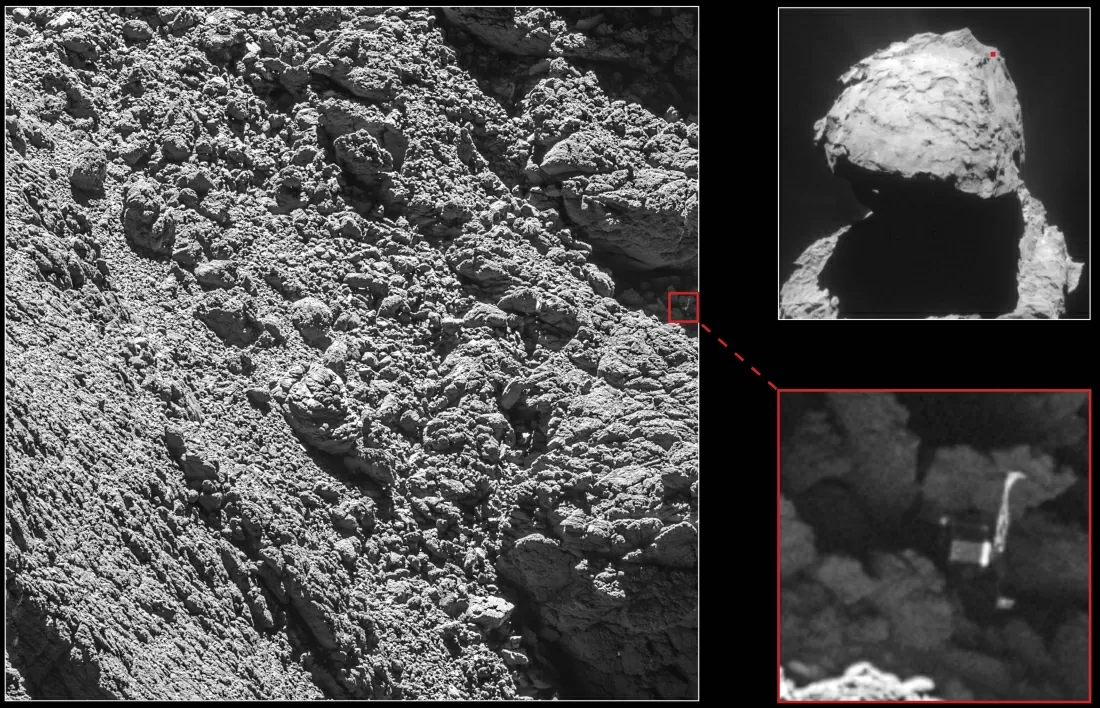
Given the number of successful space-related missions conducted in recent memory (the Mars Rover, the New Horizons mission to Pluto and the Juno probe currently orbiting Jupiter, for example), there’s inevitably bound to be some that don’t go according to plan. Such was the case with Philae, the robotic lander that served as the payload on the European Space Agency’s Rosetta spacecraft launched in March 2004.
After more than a decade in space, Rosetta reached its target, comet 67P/Churyumov–Gerasimenko. Once in the comet’s orbit, the Philae lander separated from the spacecraft and landed on the comet with the intent of studying its composition. Unfortunately, that’s when things took a turn south.
Although it came in at a speed of just 2.2 mph, the 220-pound lander bounced upon impact; its eventual landing spot was a mystery. A harpoon system was supposed to anchor the probe to the comet but failed to deploy. A thruster that was also supposed to assist in the landing did not fire, either.
After a few days, the probe’s battery was depleted and with its solar panels not being able to do their job (masked by the shadow of a cliff), it went silent. Communications were reestablished in June and July of last year as the comet moved closer to the sun but it didn’t last.
The Rosetta craft, meanwhile, continued to operate normally with plans to crash-land onto the comet on September 30 – less than a month away. Surprisingly, however, Rosetta’s Osiris narrow-angle camera recently passed close to the comet and captured a high-resolution image which revealed the exact location of the lost Philae lander.
In addition to easing some emotions, knowing the lander’s location will help put the scientific data it was able to capture and relay before going dark into proper context.
https://www.techspot.com/news/66218-missing-philae-comet-lander-found-less-than-month.html